Zoom H5 Portable Handy Recorder – Beast Of A Mic
Zoom H5 is a portable handy recorder / microphone, and it is priced at about 280 USD. I’ve been using it for months now, and it has been the source of audio in my videos, before being replaced with a Zoom F6, so today’s review will focus on H5, and comparisons between H5, the Rode NTG-2, Rode NTG-3B, and Zoom H2n as general solutions and as far as the sonic performance goes, both from the standpoint of an audiophile, and a content creator.
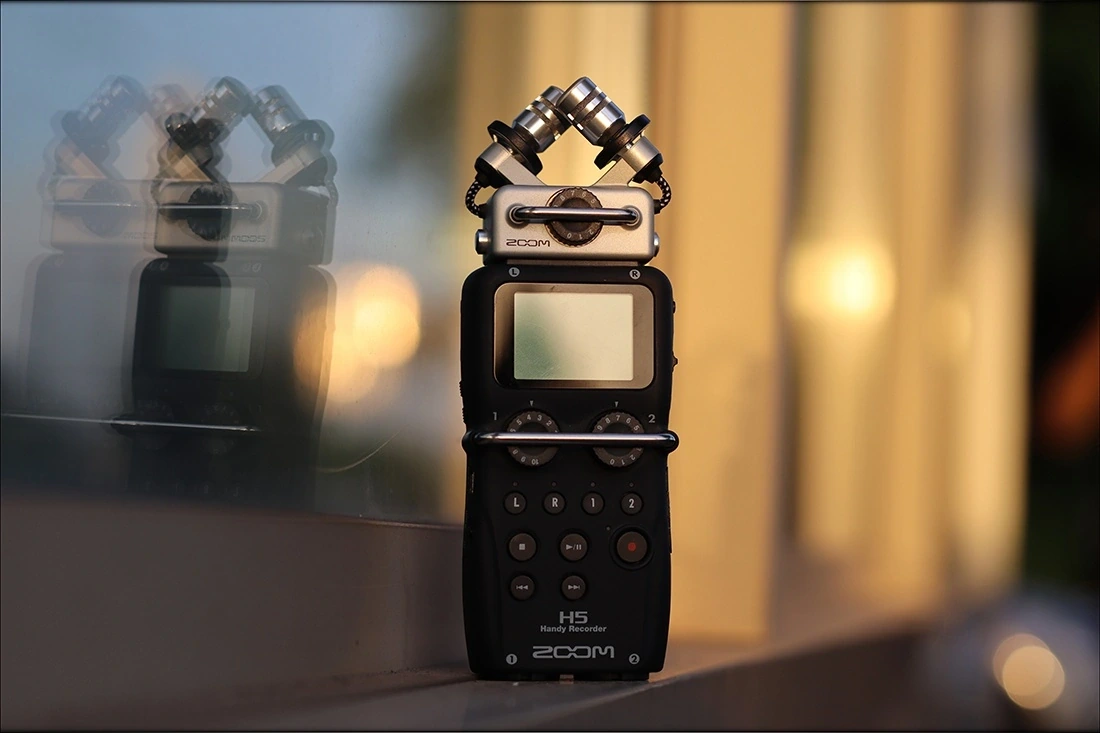
Introduction
I actually only recently started talking with the Zoom company, and they are really pleasing to work with. Very professional, and very sleek, their products are made well, and they offer excellent warranty all across the world. They provide the most widely used microphones, recording interfaces and recorders, both for independent filmmakers, but also used by some of the most popular vloggers and youtubers. They recently started making 360 degrees VR microphones too, and their products can be used for both voice, instruments, and even field recordings.
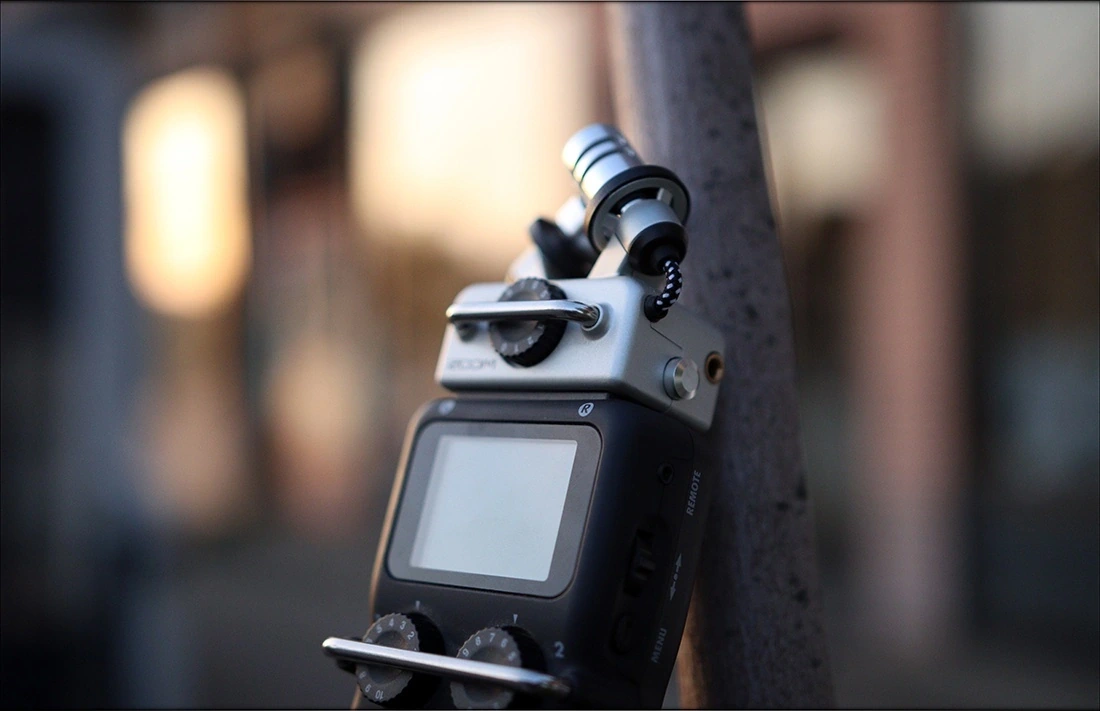
This unit is mine, I purchased it personally, and been using it to create the videos you’ve been seeing at www.youtube.com/c/AudiophileHeaven until about March 2021. Most videos since then have had their audio recorded using the newer and improved Zoom F6 which will also be reviewed in writing on Audiophile-Heaven soon.
Product Link
You can get the Zoom H5 Recorder / Microphone from www.amazon.com here: https://amzn.to/2Thspqu
Packaging
First things first, let’s get the packaging out of the way:
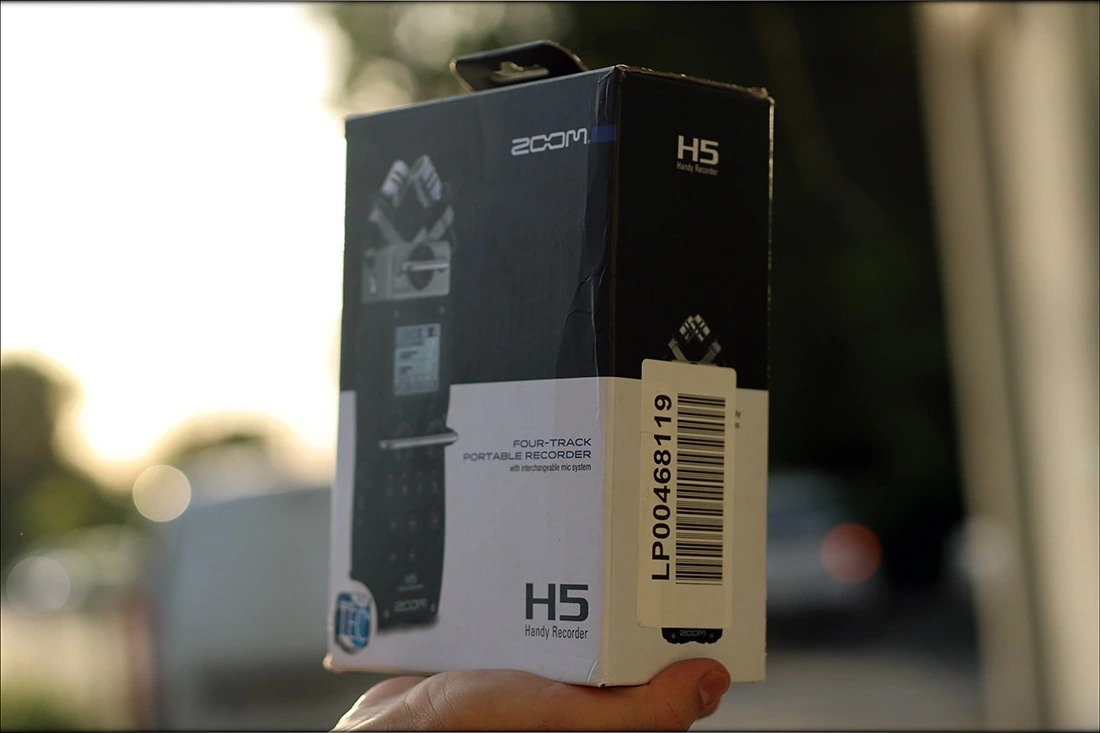
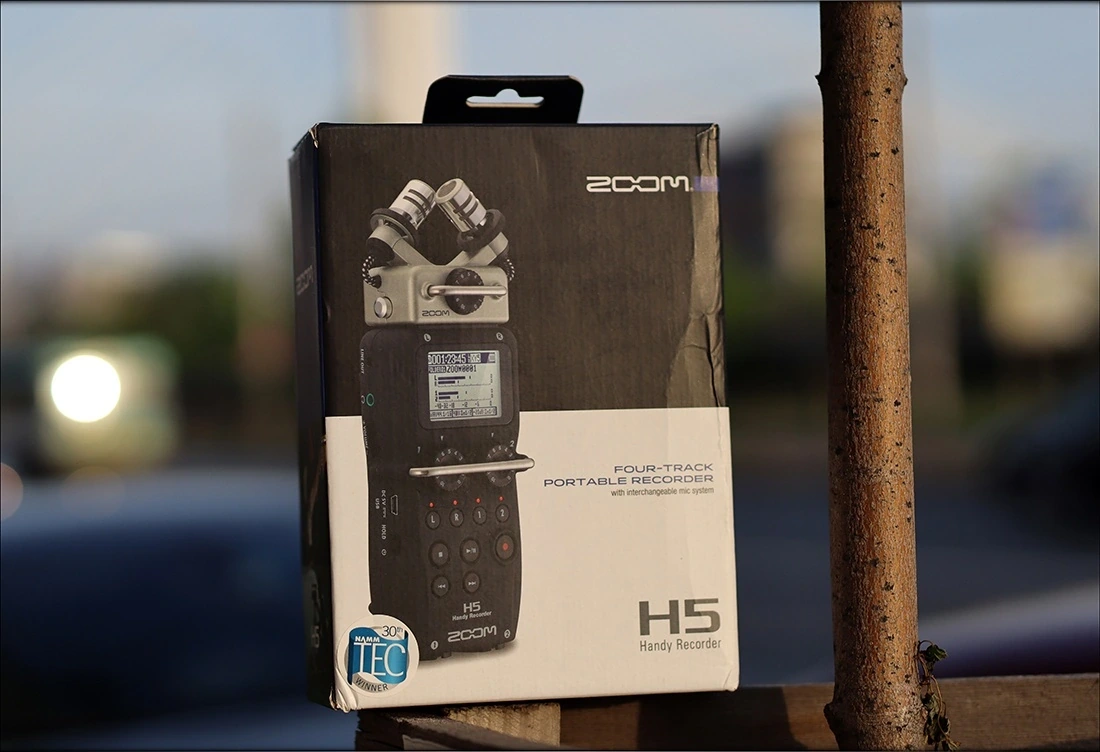
Zoom H5 comes with just a few basic accessories, and among those we can find a carrying case, and a windshield.
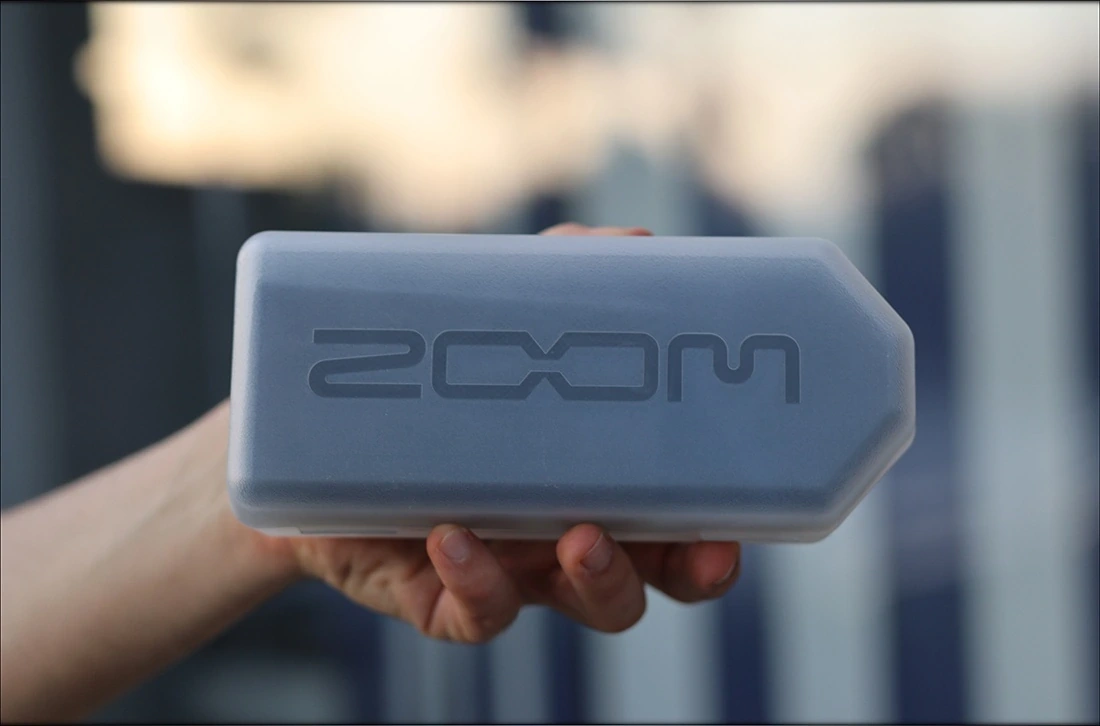
There are manuals too, but that’s about it. The package is presented nicely, and offers sufficient protection for the rather fragile XY capsules.
Build Quality/Aesthetics/Functionality
I don’t take that much pleasure reading and explaining technical aspects of microphones, but there are some key elements you will need to understand about H5 and how to take advantage of it and its features. It basically is a handy portable recorder, designed to help you record audio while out in the field. It uses 2 AA batteries, enough to keep it going for about 6-8 hours of continuous recording. This number can vary a lot, depending if you will just use the XY mic, or if you will have something connected to the Line In, or use the XLR inputs, and if you will need the Phantom Power. I used to get a far better battery life out of it while using it with only the XY mic, while I noticed it eating a lot more power using an XLR mic like the Rode NTG-2.
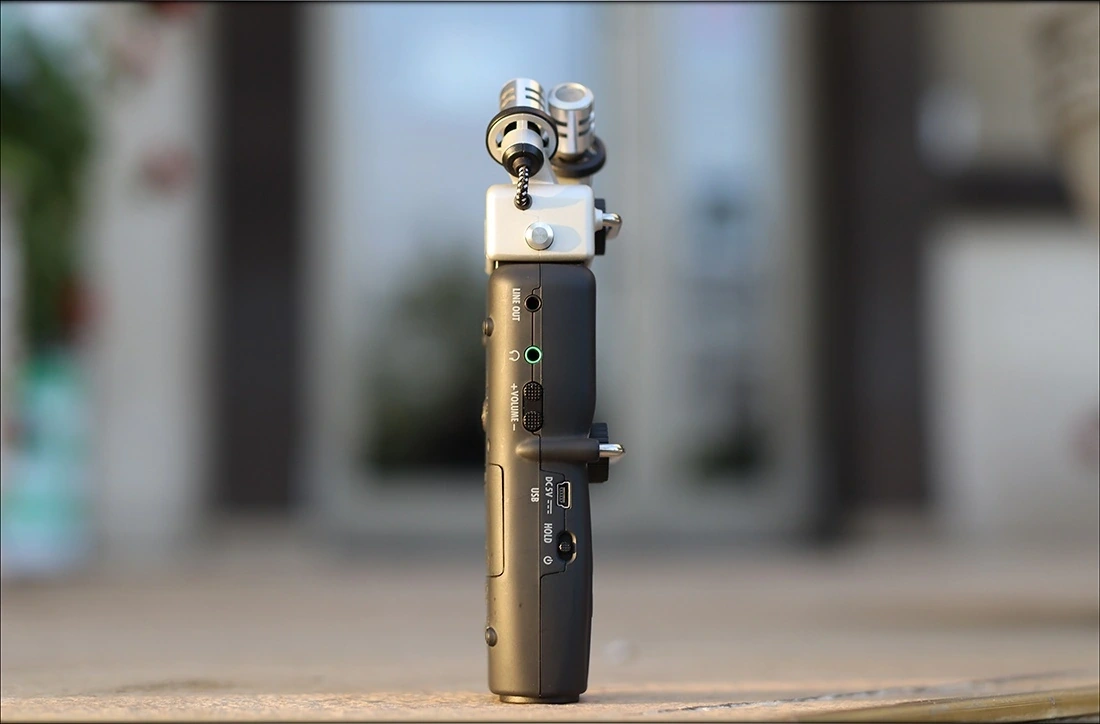
The recorder has a black and white screen, it is light to handle and nice to hold in hand. It will pick up handling noise moderately, but if you stay still and not move a lot, you won’t notice it. You can remove the XY mic capsule at the top if you’re not using it, as it is quite sensitive. This will be useful if pocketing it while recording. Most buttons are clicky and nice to the touch, while the record button is quite mushy. It scratches rather easily, and the velvet touch surface is actually quite resistant to usage, and does not peel away, like it happens in most Acer Laptops.
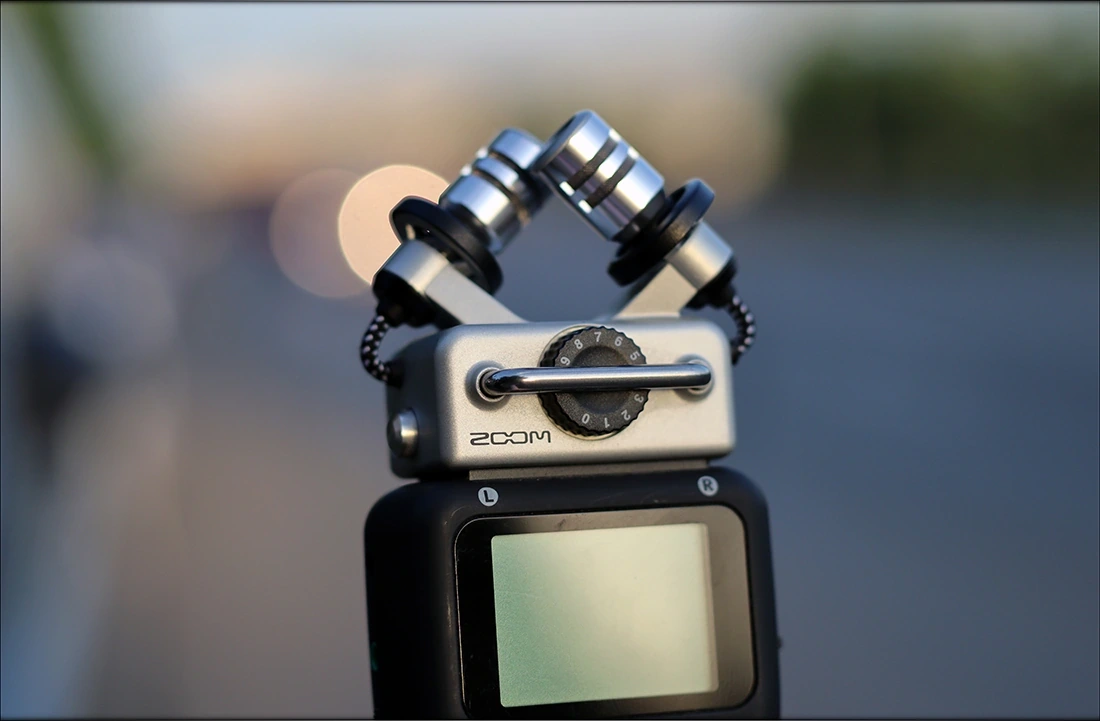
Navigating the menus can be a bit counter intuitive and you mostly have to rely on a selector and button, both on the right side, while the microSD card takes 32 GB cards at maximum (tested, it does not see bigger cards). H5 can be used as a USB interface, a situation in which it is fairly clean, but still not as clean as when it is working as a handy record (there is some extra background noise when using it as a USB interface). The USB connector is the really outdated mini-USB, which I haven’t seen since 2012.
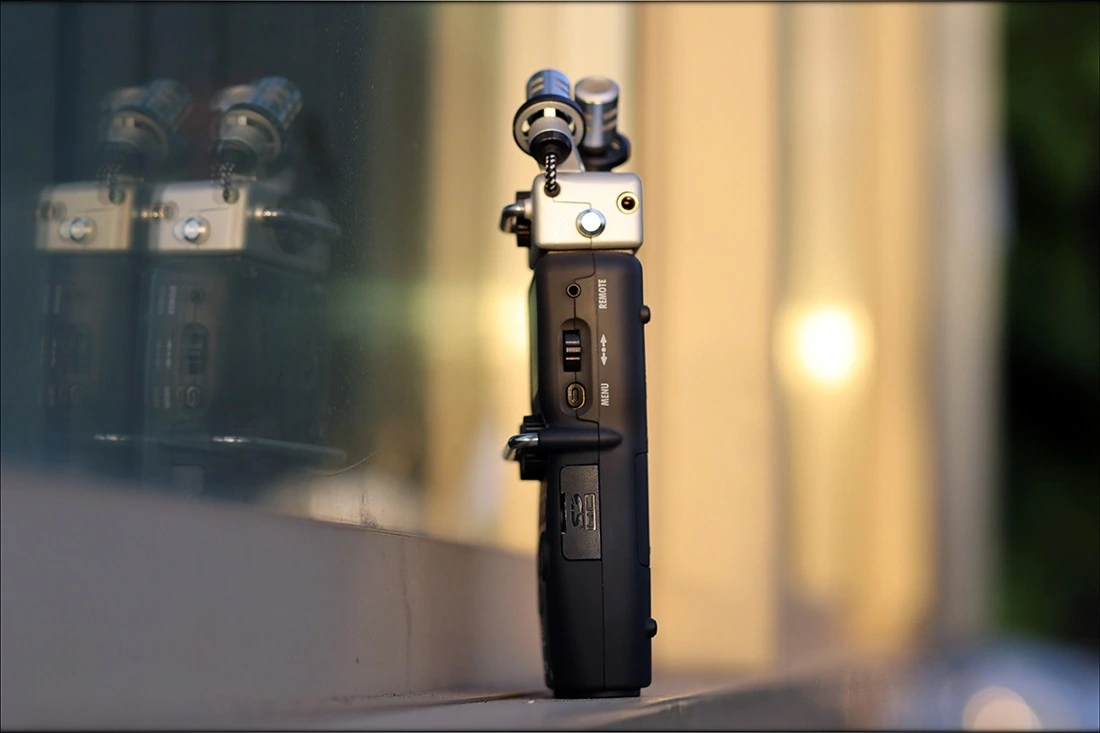
You can monitor your sound via the 3.5mm headphone output, which also has a volume selector, but it is rather weak in performance and a bit noisy. The line out port is really clean. You can get a quick idea of what you recorded, using the speaker at the back. Usually, after you set it up, you just record to a microSD card, and you just press the record button two times. That’s most of the stuff you do, after the initial configuration.
In my personal usage, the XY microphone is superb, it is probably the best field recorder I have heard. It has a bit of hiss in the background, but it is negligible in almost all scenarios. The main problem with it is that it records Echo really well, since it is made for field recording, and it is supposed to record an entire place, not just voices. There is a shotgun module available, but that has a ton of hiss and I do not recommend it as much as the XY module. You can use it for voice recording, as long as you sit close enough to it, which is about half a meter at maximum, and as long as the room is small and not tall, or as long as it is acoustically treated. It beats the quality of a Blue microphone like a Blue Yeti by a large margin.
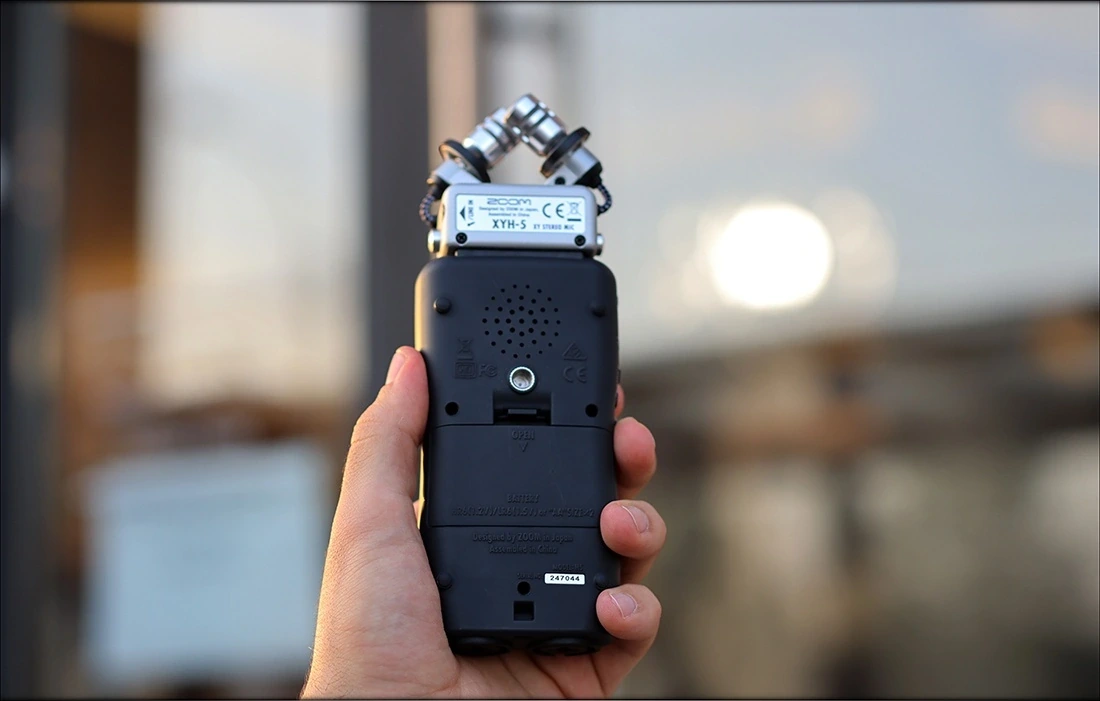
Generally, everything works perfectly, it is a really fine handy recorder, it can record in both Stereo and Mono, and the only situation in which I encountered any issue I feel the need to mention, is when I was recording in 24-Bit formats, as I had some skipped seconds. I was not able to debug this issue, but as far as I see it, especially with the microSD space limitations, most folks will be recording in 16 Bits anyways. I recommend avoiding recording in MP3, as those will come out less practical to edit later, and all audio recordings need some post production.
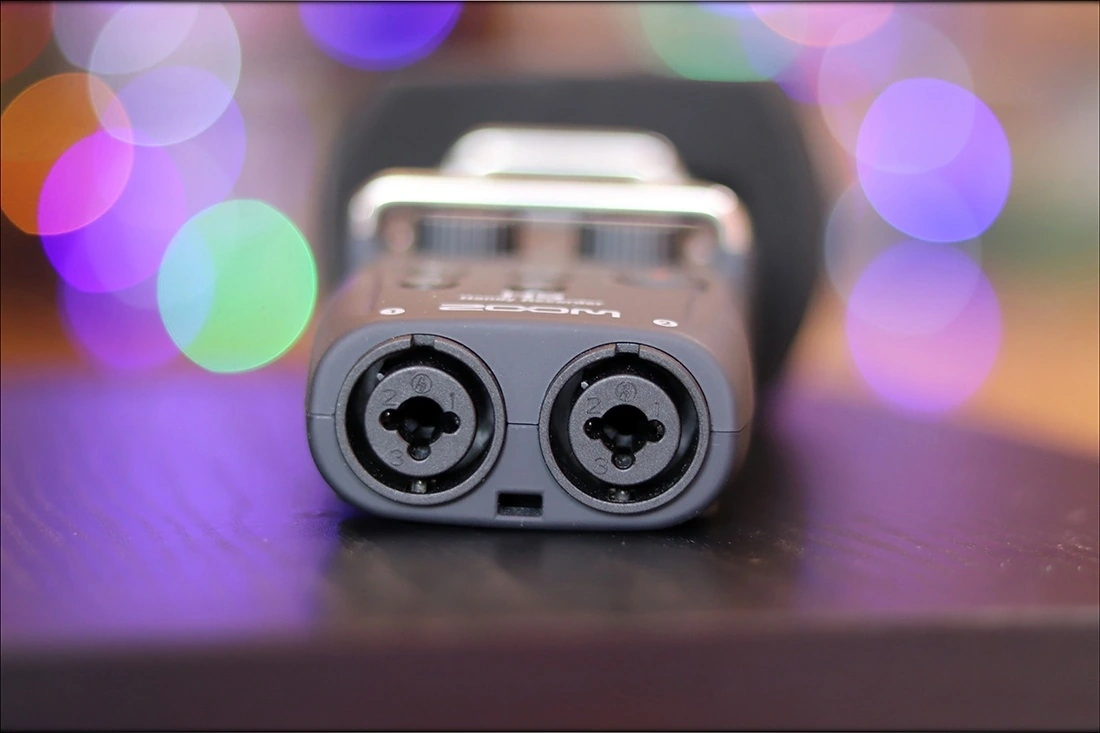
You can quickly switch between using the XY mic and the XLR inputs by pressing either the L/R buttons or the 1 / 2 buttons at the front. You can change the gain by using the two wheels at the front, for the XLr inputs, or the wheel on the XY mic module at the top, to change its gain. The windshield is a must if you want your sound to have wind, which is something that happens really easily when recording. I would recommend an extra pop filter too for the best sonic results.
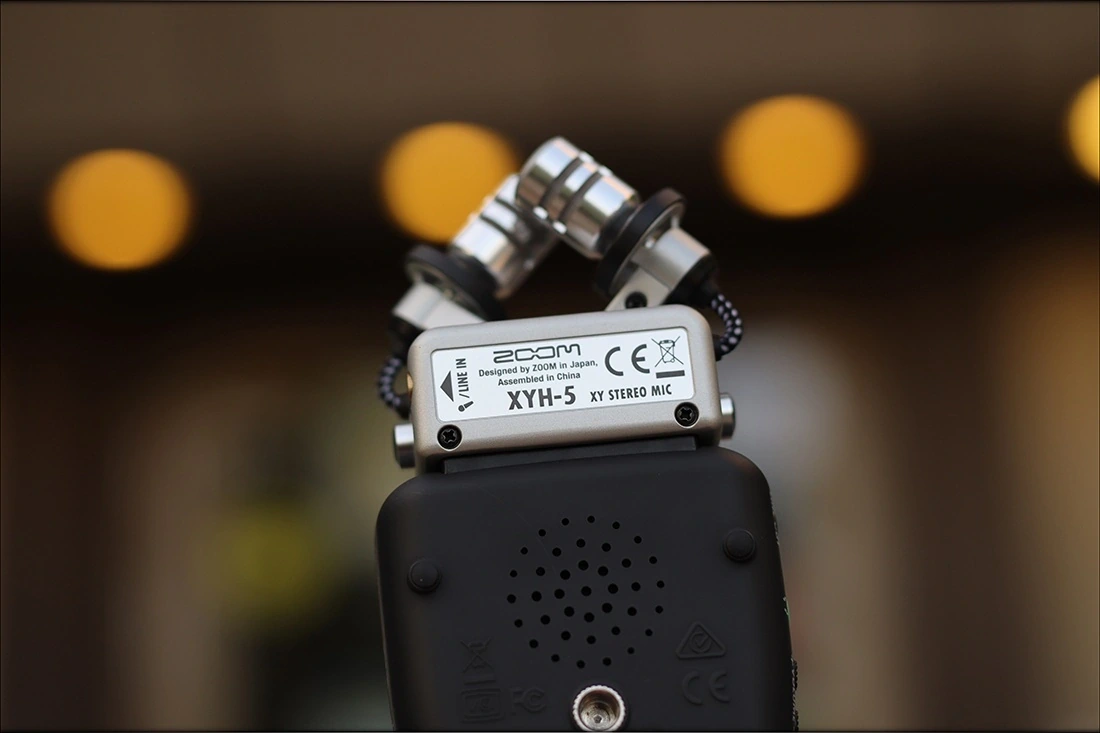
Although it is a bit heavy for this, the Zoom H5 can be mounted on a microphone stand, as it has a 1 / 4 thread on the back. It needs some adjustment mechanisms, since that is not a standard microphone thread format. It can work though, and it has been the way I’ve been using it for a long while.
Video Review (Rode NTG-2 Video, but has useful examples for Zoom H5 towards the end)
Sound Quality
Generally, the sound of the H5 can be described as extremely accurate. This being said, it has three different sounds, one when being used as a standalone unit with the XY microphone, one when being used as a recorder and having an XLR based microphone connected, with phantom power, and a different sound having the 3.5mm Line In port connected.
To silence this subject once and for all, multiple sources from the music creation department actually told me that cables do make a difference, and studios do rely on different cables for different jobs. They do not, however rely solely on it, and post production plays a much larger role in the final sound, better cables being used just for the sake of keeping the distortions at a minimum rather than as a way to tune the sound. This is true for both Single Ended RCA cables, and XLR cables.

The most important sound for X5h, for most people, will be with its own XY capsule. This is because most people who can only afford it, will not be looking to invest in a subsequent microphone to connect to it. The XY microphone is fairly clean, it has some background hissing, but fairly clean in terms of overall distortion. When doing my tests, I acquired an Audient EVO 4 interface, which I am actually using as a soundcard, but the recording input of it is extremely noisy and distorts easily, regardless of the settings I apply. Back to the XY module, it is great for picking up soundstage and spatial cues, and it is mainly made to be a field recorder. This means that the subject, if there is one, will be integrated with the background, and that module will pick up Echo, room acoustics and more. It does not pick up subsonic rumble, which makes it fairly good for a microphone, as that can be quite annoying in a mic. It does not pick up wind and breathing noise while the foam is attached either. In a smaller room, or a treated room, it is perfect at about half a meter away from the speaker, or closer. Move even a few centimeters away, and it will start to add echo to your voice, and you will sound audibly distant, which will result in a fairly poor sound for voice.
The 3.5mm input found on the XY module has a really strong and clean sound, which is vivid and detailed. Really pleasing experience, as long as you have a decent 3.5mm microphone. May feel redundant, but I actually used it for my Lotoo Paw S1 outdoor video while using a wireless Lav mic. The sound quality was quite a bit better than my smartphone, a Xiaomi Poco F2 PRO at that moment, so all in all, I have been happy with the performance of the Zoom H5 for this too.
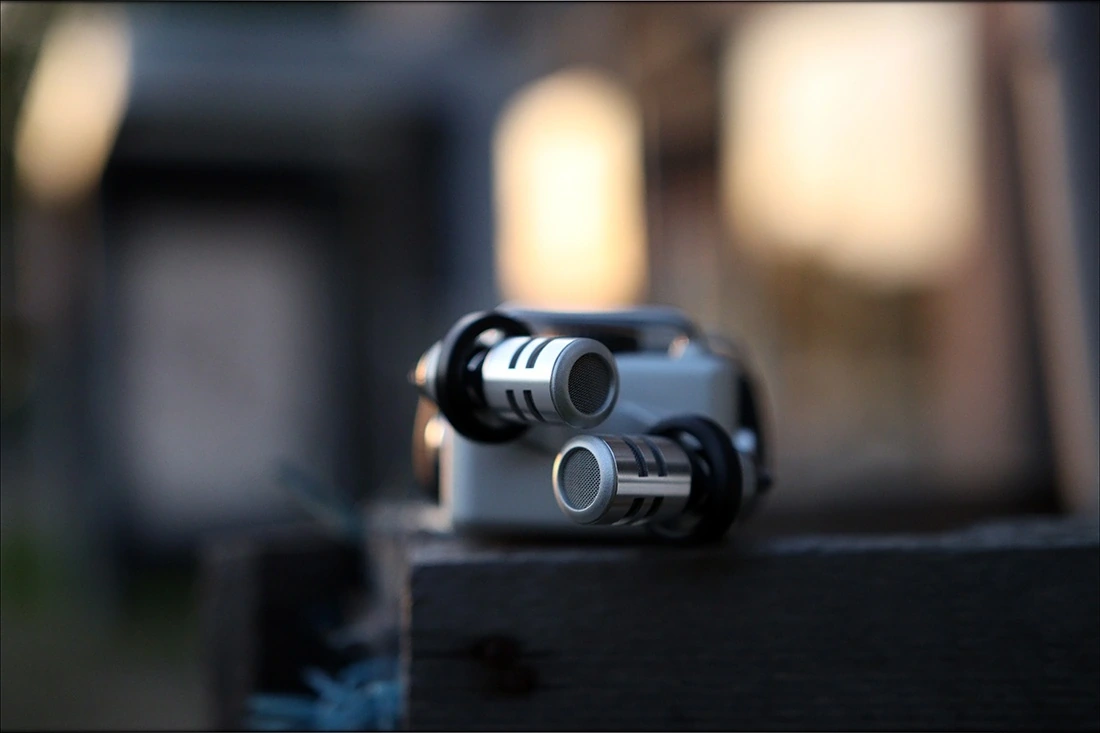
The other aspect is when connecting an external XLR Mic to Zoom H5. Since this is the most widely used interface and handy recorder, a lot of people are relying on it for external mics, especially shotgun mics. A shotgun mic will be extremely directional, but you can place it much farther away from the speaker, without adding Echo, or noise. It is in particular useful when recording human speakers and dialogue, but also while filming basically anything. I like the fact that you can remove the XY module while doing this, to limit power draw and to make the unit a bit more ergonomic. The quality of the built-in preamps for microphones is excellent, you can easily record two mics at once, and I like having independent gains for each. I would say that there is some hissing in the background, especially with Rode NTG-2, that needs a ton of gain, but with NTG-3B that does not require as much gain, you don’t hear background hissing. The overall sound is really clean, but pretty flat, not overly dynamic, and pretty linear. It can be processed in post to sound much better, but if you need the best quality, I suggest checking out Zoom F6, which I will review soon, and which I found to be considerably better sounding than H5. I prefer the quality of the Zoom H5 preamps over any USB interface I tested up to this point, but that is because I also find it more handy, as usually I’m not filming with my computer turned on, and I want to avoid using something like an iPurifier or iDefender from iFi too, as it would complicate my setup if recording.
Comparisons
Although I may not be a big microphone head and known for using those, I do have my fair share of experience, and I have been using a few over the years. This means that I will be comparing the H5 with Zoom H2n, which I used for over 2 years, Rode NTG-2 and NTG-3B. Don’t even think to compare the quality of Zoom H5 and any camera built in microphone, because as far as that is concerned, it will slaughter them.
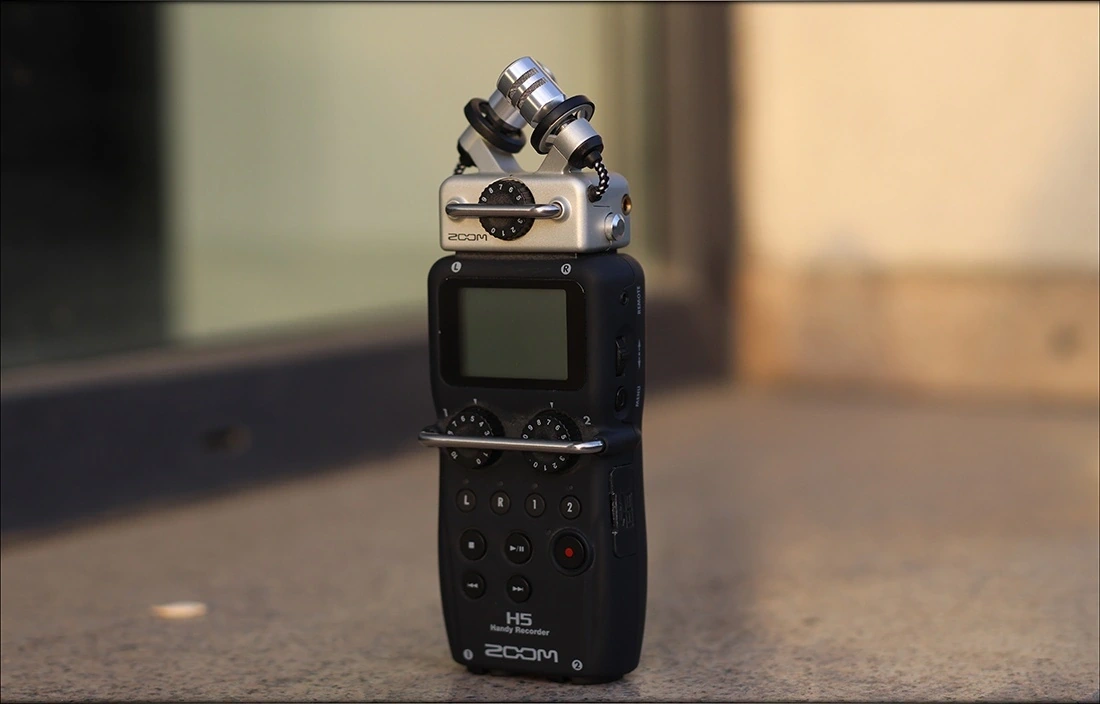
Both the XY mic module, and the built-in preamplifier are universes ahead of anything that any camera comes with, including high-end cameras like Canon EOS 250D, Canon EOS 80D, Sony Alpha A6000, Sony A7III, Sony A6400, Sony A6600, and Sony Alpha 7C. It also beats the likes of Olympus E-M5 and Olympus E-M1X. Even the Panasonic GH5 is worlds below the performance of Zoom H5 when it comes to anything audio, so you can vastly improve the quality of your video if using something like Zoom H5. Audio is more than 50% of a video, and Zoom H5, and even the tiny Zoom H2n can help with that a lot.
Zoom H5 vs Rode NTG-2 (280 USD vs 270 USD) – The advantages of the NTG-2 are similar to those of the NTG-3B, but there are some minor differences. NTG-2 sounds much flatter, and more even, but it lacks dynamics. This has nothing to do with Zoom H5, and it will be constant regardless of what interface you’re using. I think that compared to NTG, I prefer the overall recording quality of Zoom H5 alone with the XY module, but that won’t work if your room is echoey. In an echo-prone room, a mic like NTG-2 can help a lot with the unwanted echoes, but still the sound will lack the overall emotion, dynamic and warmth of the XY mic module that Zoom H5 comes with. Because Rode NTG-2 needs so much gain to sound at an acceptable loudness, it always has more hiss than the default XY mic module that Zoom H5 comes with.
Zoom H5 vs Zoom H2n (280 USD vs 170 USD) – Big money needs to be invested for improvement, but the difference between H2n and H5 is vast. H5 is vastly superior in every way compared to the H2n, and no offence to Zoom, but the sound of H2n is really poor in comparison. The trick here is that if you’re using H2n, you are both on a limited budget, and you want to squeeze every drop of performance you can from your setup. For that, H2n is better than H5, because it can do something similar for cheaper, but as far as features go, H5 is much better. It is also much easier to break, and I can’t tell you how many times my H2n took a hit and came back 100% ok. H2n can’t work with an external mic, but has more battery life than H5. You can install H2n on a mic support too, but again, you have a 1 / 4 thread and need adapters. H2n is recording on its face or back, so either where the display is, or the back, so it can be tricky to position and adjust if fiming video. You need to hold H2n much closer to the speaker for a similar quality as to H5. Even when they are both placed ideally, the sound of H2n is very flat, has a ton more hiss, and generally lacks detail and dynamics compared to H5. H5, with its own XY module sounds much much cleaner, with less hissing, less distortion, can take considerably more volume without distorting, is deeper, can go higher in frequency, is much better for singing and recording music, and takes in less echo than H2n does naturall. You can configure H2n in either XY or MS mode, but it still can’t compete with the quality of H5, regardless how you configure it. Setting the H2n in MS mode with only the central mic on, in hopes to avoid and remove echo does not work well, and it still records echo, plus, it needs much higher proximity to the source, so you need to be about 15 – 20 cm away from it for a decent sound. With H5, it still sounds ok at about 50 cm, but about 60cm was the maximum I could do for a good sonic performance. I had my setup dying on me with both, because I forgot to change batteries, and had to use camera’s built in mic for videos, so my complaints are only if you really need high end sonic performance, and in that case, H5 is all the way the winner. If you need a basic mic that beats the mic embedded in any camera out there, including the really good ones like Canon EOS 250D, Canon EOS 80D, Sony Alpha 7S III, or such, then H2n will deliver nicely. It will be much better than those, but still considerably below H5. Zoom F6 can only record from external microphones, so don’t even think about it, if you want to be recording with the XY module built in either H2n or H5.
Zoom H5 vs Rode NTG-3B (280 USD vs 670 USD) – Sonically, Rode NTG-3B needs a source to sing, and I found that H5 was a fair source for it. I would say that F6 is a much better source, with better clarity, but if you don’t have the budget for F6, then H5 will do the job really well. 3B is really poor for scene recording, and for recording anything that is not a human talker, or an instrument. By comparison, you could have an entire band play music, and record them using the H5’s XY mic, and it would sound amazing. The main disadvantage would be that the bass recorded is quite low in quantity, and you would have to do a lot of post production and you still wouldn’t bring it anywhere near close to the same effect as NTG-3B. On this note, NTG-3B has a much much stronger bass, to the point where I sometimes need to apply a low cut filter to my recordings, because my voice has too much through it. This can be done from the menu of H5 too, and I find it to be a really handy feature for microphones like NTG-3B. The midrange is much more smooth and natural on NTG3B, but it has almost zero soundstage, where it is extremely wide and detailed on H5’s XY mic module. While using NTG-3B, it helps isolate echo if your room is echoey, and soundstage is not great for voice that typically needs to be recorded and processed mono. I’ve been more than happy using the XY module with my smaller room, and probably would not have made the upgrade if I didn’t change locations, so you won’t need an external mic from the start, but it can be a worthy upgrade if you’re willing to go through the hassle.
Value and Conclusion
At the end of the day, the review was about the Zoom H5, a microphone I’ve used for many of my Youtube videos, and a microphone / recorder that I came to love and enjoy. I have always been a bit frustrated with the overall build quality, and recording quality of the Zoom H2n, and always wanted an upgrade, and well, Zoom H5 has been that upgrade. Zoom H2n has been a huge setp up from using the mic inside my camera, and Zoom H5 offered the next setp, making my experience even better, and improving everything to the point where I am not content.

The only reason I upgraded to Zoom F6, to be honest, is that I wanted to see how the newer interface sounds like, and indeed it is even better than H5, but we will be exploring that in its own review, soon to come on Audiophile-Heaven. I like the H5 so much that I consider it the best price / performance ratio I reviewed to date, and I think that if you will go for it, you will be happy.
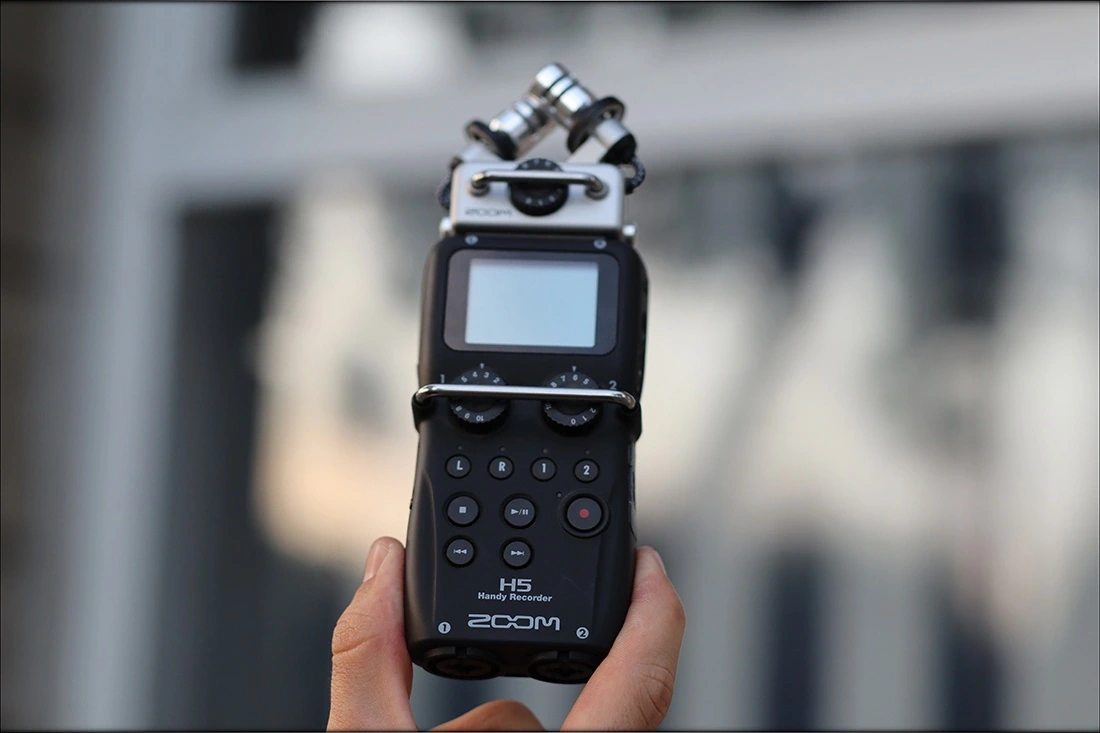
Just don’t expect the XY microphone module to do absolutely everything, as it has its limits, and if you eventually will figure you need a shotgun, or a lav mic, it is best to invest in it, and use H5 as a portable recorder. The quality, even when using a 3.5mm line in cable will beat any smartphone and entry-level recorded anyways.
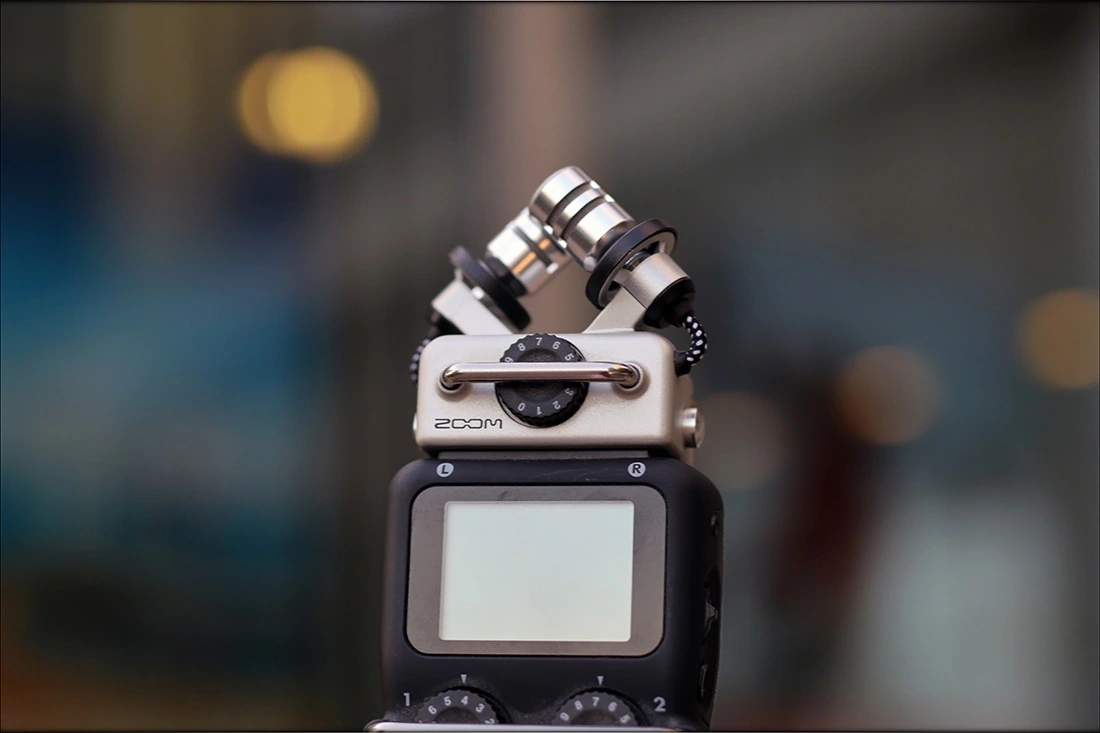
At the end of today’s review, Zoom h5 has been extremely pleasing to use for a long while, and I totally recommend it if you need a high-end portable recorder, something that works out of the box, is easy to use and configure, and something that sounds really good. Don’t forget that zoom offers excellent warranty and support, plus their products are really well made.
Product Link
You can get the Zoom H5 Recorder / Microphone from www.amazon.com here: https://amzn.to/2Thspqu
--- Please remember to stay safe, and always have fun while listening to music!---
- If you have a dime to spare, please donate, and help us! It would make the day brighter for me and my wife-
Full Playlist used for this review
We listened to more songs than those named in this playlist, but those are excellent for identifying a sonic signature. I recommend trying most of the songs from this playlist, especially if you’re searching for new music! The playlists are different for Spotify, Tidal and Youtube, and based on the songs I enjoy and are available on each!
https://www.youtube.com/playlist?list=PL_cjBXGmwSHSdGcwuc_bKbBDGHL4QvYBu
https://open.spotify.com/playlist/5J3oloz8Riy9LxEGenOjQ0?si=979ba4f082414be7
https://tidal.com/browse/playlist/330fd544-8e5b-4839-bd35-676b2edbb3d5
--- Contact Us ---





